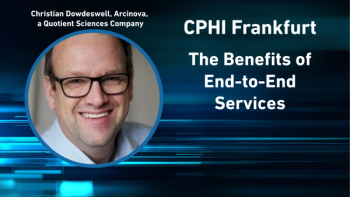
CMO cleanroom challenges
Contract Manufacturing Organisations offering manufacturing capabilities to suit specific industry sectors, niche segments or perhaps simply to meet the demands of individual clients? processes face a greater challenge when designing their facilities and cleanrooms when compared with an originator company or a single-product manufacturing facility.
Neal Wesley. Technical Director at SCM Pharma.Contract Manufacturing Organisations offering manufacturing capabilities to suit specific industry sectors, niche segments or perhaps simply to meet the demands of individual clients’ processes face a greater challenge when designing their facilities and cleanrooms when compared with an originator company or a single-product manufacturing facility.
The numerous clients’ varied drug substances and drug products, their constituent raw materials and APIs create a potential risk of cross-contamination, which demands that due attention and consideration is afforded to implementing satisfactory cleanroom designs, systems and procedures to address the main challenges of attaining and maintaining cleanroom conditions.
The most difficult challenges are often centred around building as much flexibility as possible into any facility and equipment investment.
CMO concerns
Factors which are not necessarily unique to CMOs but still of concern are often with regard to equipment. A successful CMO needs to be flexible and reactive to customer project requirements, which often utilise differing equipment and manufacturing environments. You can rapidly become overwhelmed with equipment and available space to store it following its use on a specific project. Many clients’ processes will require that the CMO addresses the possible issues surrounding potential hazards and risks associated from introducing their products into the facility.
Addressing clients’ product contamination profiles will create certain restrictions on the design and operation of the facility and its cleanrooms. This will necessitate all process flows for staff, incoming raw material, intermediates, components, process equipment and process waste streams be assessed in relation to the potential risk for cross contamination.
Manufacturing containment strategies should be developed with consideration given to certain aspects of design, such as cost versus complexity, concurrent versus campaign manufacturing, single versus multiple batch production, closed versus open processing systems, and multi-use versus dedicated or disposable equipment while maintaining the drive to implement and maintain flexible and/or adaptive cleanroom and air handling designs and process flows.
Dealing with contamination risk factors
Having a dedicated team to fully evaluate the risk involved with contamination and cross-contamination is paramount. In some instances, total dedication of facility, equipment and personnel is required. The CMO must have an effective internal procedure to assess and manage perceived or potential risks from client processes and starting materials at the initial stage of all proposals for new process introductions.
There is an inherent risk of cross-contamination from the use of non-dedicated cleanrooms and equipment, such as dispensaries, wash areas, corridors, autoclaves, ovens and washing machines. This may require an extended scope for cleaning validation requirements and total segregation of project specific API, intermediate bulk and finished products.
The CMO will need to implement demanding procedures and systems to manage onerous cleaning validation challenges and strict management for suppliers of starting materials and APIs.
The management of perceived risk will include risk assessment tools such as FMEA or HACOP to initially identify then look to eliminate, reduce, manage, control, monitor and review the potential risk.
The CMO quality system should have robust procedures in place to manage the introduction of new and novel raw materials into the facility.
Identifying critical process flows will assist in the development of materials handling philosophies, segregation strategies and entry and exit transfers of equipment, materials and operators. The CMO should also evaluate and control process waste streams and define upset conditions within areas of the facility such as cleanrooms.
The formulation characteristics of client products may be hazardous to such a degree that certain restrictions are placed on the production operator team.
Mitigating risks posed by personnel
Cleanroom operators are generally viewed as being responsible for introducing over 80% of the particulate contamination recorded by cleanroom monitoring systems.
Mitigating the risk of potential contamination to manufacturing processes can be limited through the use of isolator barrier technology and employing mechanisation or automation to reduce human aseptic interventions in critical processing areas.
Thought should be given to preventing contamination reaching cleanrooms by the use of appropriate sized rooms with defined maximum occupancy and limitations for staff changing in and changing out to mitigate the amount of contamination. The pre-assembly and sterilisation of components may also be employed to reduce the amount of manual aseptic manipulations and connections in the critical zone.
On-the-job training and annual training programmes for aseptic operators should cover topics such as aseptic manipulations, basic microbiology training, human sources of cleanroom contamination and concepts of HEPA filter air systems and laminar and turbulence airflows. Effective aseptic operator gowning validations should also be in place. However, just as important is a strong GMP company culture with regular reinforcement.
Newsletter
Get the essential updates shaping the future of pharma manufacturing and compliance—subscribe today to Pharmaceutical Technology and never miss a breakthrough.





